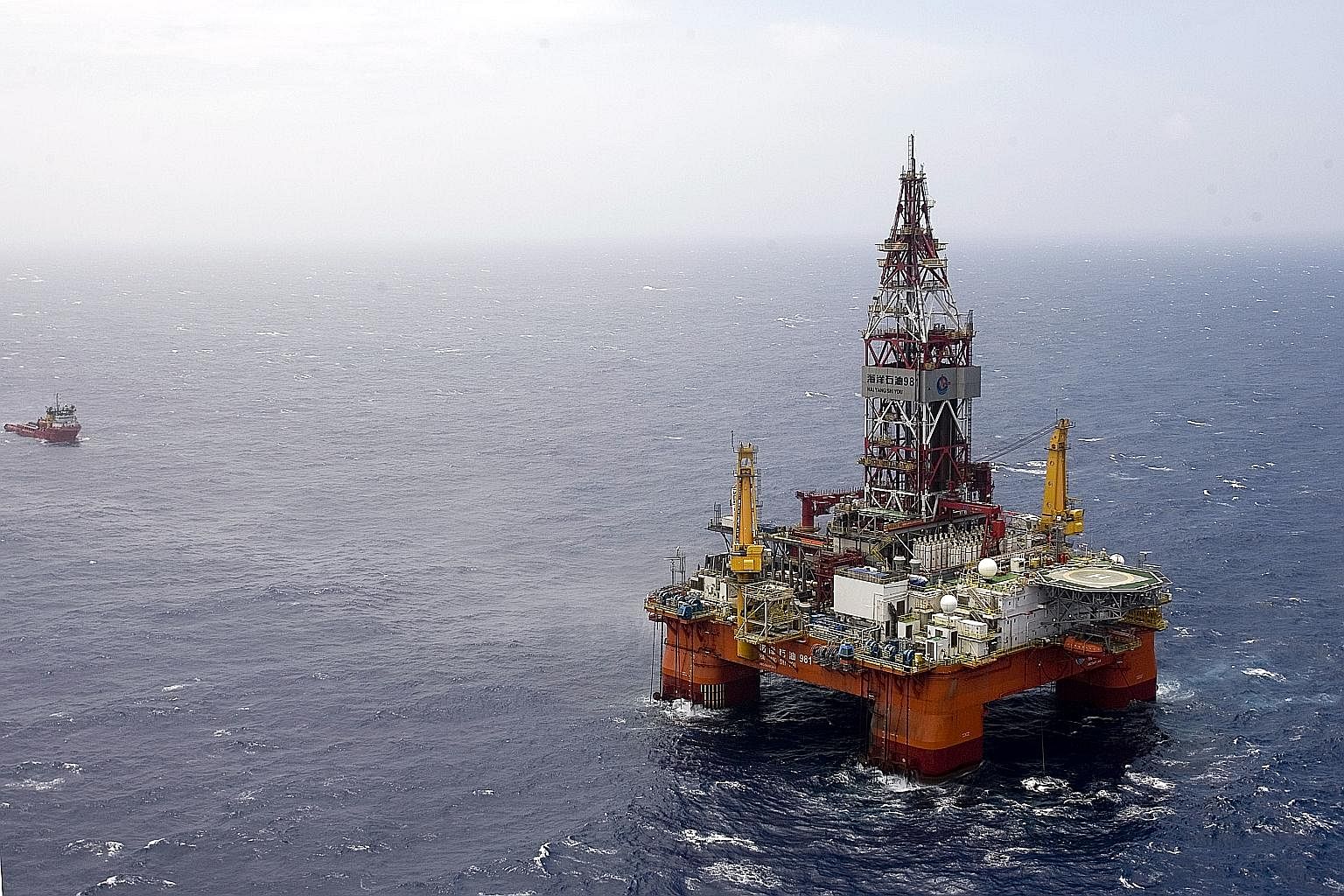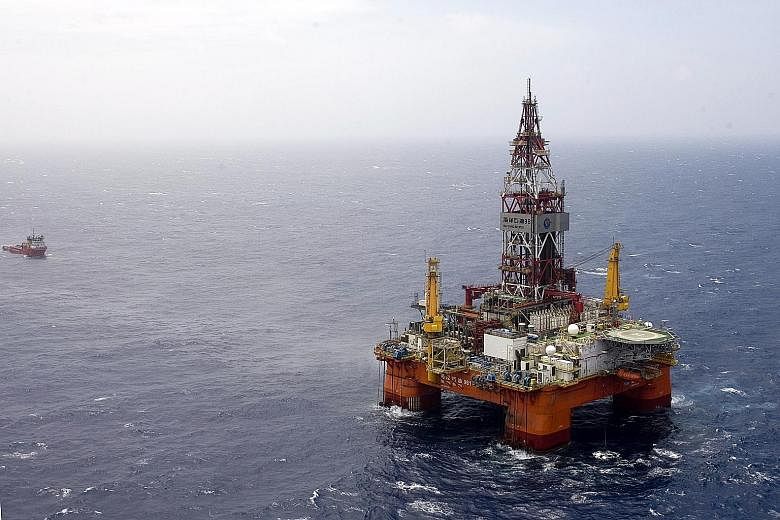In the resource-rich South China Sea, China's main exploitation and exploration efforts have traditionally focused on the northern part, rather than the south. China does not own any oil and gas wells in the much-disputed Spratly waters, and has not gained even a barrel of oil from there.
However, in the central and southern parts of the South China Sea, it has been overshadowed by ambitious Vietnamese oil and gas exploration efforts.
Vietnam has granted oil and gas drilling rights in the Spratly region to international oil giants and signed multilateral drilling contracts with more than 30 countries, including the United States, Japan, Britain and the Netherlands.
Given Vietnam's oil rush in disputed areas of the South China Sea, it is highly likely that China will make conspicuous adjustments to its existing strategies on oil exploitation in the area. It will need to rethink its policy of working with other disputant states to jointly develop resources, for starters.
THE SITUATION SO FAR
Until now, China has adopted a passive stance over Vietnam's oil and gas expansion aspirations in the central and southern parts of the South China Sea. One reason for this is that the Chinese government has been willing to sacrifice economic benefits for peace and stability in the area.

For example, for over two decades, the Chinese government has refrained from forcefully implementing a contract signed with American company Crestone Energy Corporation after oil drilling efforts were obstructed by Vietnam in the early 1990s in the so-called Block Wananbei-21 (also named Block Vanguard Bank-21).
But in recent years, Vietnam's largest national oil company, PetroVietnam, has stepped up exploitation efforts within the much-debated nine-dash line - which, in maps issued by the Chinese government, appears to assert Chinese claims over much of the South China Sea.
As at 2010, it had as many as 68 oil and gas fields, whose annual total crude oil production has exceeded 25 million tonnes , far beyond the expectation of Vietnamese domestic demand.
How might China respond to the Vietnamese efforts?
CHINA'S POSSIBLE RESPONSES
First, China may conduct a comprehensive review of the real effect of its long-held policy of putting aside disputes for joint development and creating a joint multilateral development authority to exploit resources in the disputed areas. The policy was put forward to bridge differences and build confidence through economic cooperation in disputed maritime zones, with the ultimate goal of maintaining regional peace and stability.
But the real effect of this cooperative resource development policy has been far from satisfactory, at least for the time being. One of the few highlights under this policy was the Tripartite Agreement for Joint Marine Seismic Undertaking in the Agreement Area in the South China Sea signed by China, Vietnam and the Philippines in 2005.
However, this also failed to achieve the desired results and came to a halt after the first phase ended.
It is fair to say that the policy has been at a stalemate and stands little hope of making any further progress in the foreseeable future. Therefore, it is rational to expect a more proactive, alternative approach.
Second, China may shift the focus of its oil exploitation efforts from the northern part to the central and southern parts in the South China Sea, which implies more friction with Vietnam, such as the skirmishes of May 2014. That month, China moved a semi-submersible oil platform, the Haiyang Shiyou 981, near the Paracel Islands, a move that raised fierce protests on the Vietnamese side. Vietnam claimed that this violated its territorial claims, while China claimed it was legal as it fell within the surrounding waters of the Paracel Islands under Chinese military control.
The deployment of the Haiyang Shiyou 981 was widely seen as evidence of the southward shift.
At present, China's natural gas fields (like Liwan 3-1, Liuhua 34-2 and Liuhua 29-1) are mainly located in the Pearl River mouth basin, the Yinggehai Basin and other basins in the northern part of the South China Sea.
In recent years, however, China has made tremendous strides in oil and gas exploration technology, which lays the basis for a southward shift. The Haiyang Shiyou 981 ranks among important technological advancements that also include the Haiyang Shiyou 720, a major deep-water seismic geophysical exploration vessel; and the Haiyang Shiyou 201, the world's first deep-water pipe-laying crane vessel.
The Haiyang Shiyou 201 features 3,000m of deep-water pipe-laying, 4,000 tonnes of lifting capacity and dynamic positioning capability. It is also designed to handle gearing tasks.
Third, China may make appropriate adjustment to the assignment of the proportion of profits coming from oil exploitation in the South China Sea.
Since the 1980s, it has signed cooperation contracts with over 40 oil companies from more than 10 nations (including the United States, Britain and France) in which China generally retains 51 per cent of all profits.
However, compared with Vietnam's less than 20 per cent - as in Hong Ngoc Ruby gas field - China's offer is obviously less attractive to international oil giants. Therefore, it is rational to expect China to reduce the share it takes in future international cooperation on oil exploration in the South China Sea.
Vietnamese diplomatic manoeuvring has been increasingly augmented and supported by concrete action to consolidate its control over the Spratly Islands and waters. It is also noteworthy that PetroVietnam's most productive wells are completely within China's nine-dash line.
As to what steps will be taken by the Chinese government to deal with Vietnam's oil rush in disputed areas of the South China Sea, one thing is clear - the answer points to a more proactive approach.
- The writers are research fellows with the China National Institute for South China Sea Studies in Haikou, Hainan.

